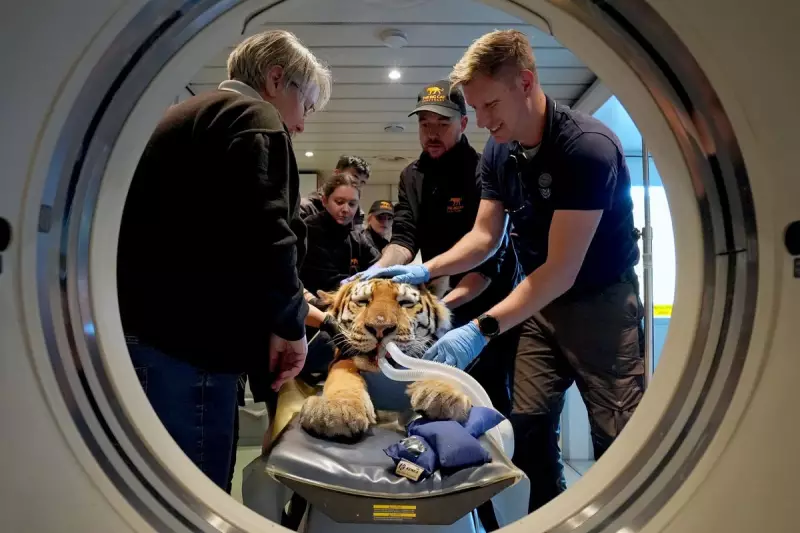
In an extraordinary veterinary breakthrough, some of the world's most endangered big cats are undergoing revolutionary CT scans at a Kent wildlife park, providing unprecedented insights into their health and anatomy.
Howletts Wild Animal Park near Canterbury has become the stage for cutting-edge conservation medicine, where majestic Amur tigers, clouded leopards, and cheetahs are receiving state-of-the-art medical examinations typically reserved for human patients.
Feline Medical Marvel
The sophisticated scanning procedure involves carefully anaesthetising each cat before transporting them to a nearby medical facility equipped with advanced computed tomography technology. This non-invasive approach allows veterinarians to examine intricate skeletal structures and internal organs without any surgical intervention.
"This technology gives us an incredible window into the health of these magnificent creatures," explained the park's head veterinarian. "We can detect early signs of arthritis, dental issues, or other health concerns long before they become visible through conventional examination methods."
Conservation Through Technology
The research represents a significant advancement in wildlife conservation, particularly for species teetering on the brink of extinction. The Amur tiger, one of the subjects in this groundbreaking study, has fewer than 500 individuals remaining in their native Russian far-east habitat.
Veterinary teams are using the detailed scans to:
- Monitor joint health and detect early arthritis
- Examine dental structures and identify potential issues
- Study bone density and skeletal development
- Create detailed anatomical references for future research
Beyond Routine Check-ups
While the cats receive regular health assessments, the CT scans provide a level of detail previously unimaginable in wildlife medicine. The three-dimensional images allow veterinarians to rotate and examine every angle of the animal's anatomy, revealing information that could prove crucial for breeding programmes and long-term survival strategies.
The data collected is being shared with international conservation organisations, contributing to global efforts to protect these vulnerable species. As one researcher noted, "Understanding their physiology at this level helps us not only treat individuals but potentially safeguard entire species for future generations."
